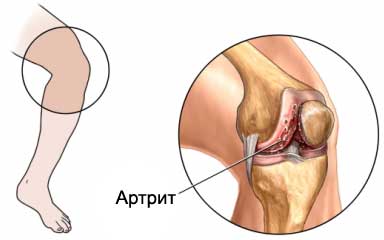Arthroempyesis – Septicheskiy arthritis
Description suppurative arthritis
Septic arthritis is a serious infection of the joints, which is caused by bacteria. Infection leads to, that the joints are filled with pus and substances, which are directed against bacteria. This can result in damage to the surrounding bone and cartilage.
This disorder is a medical emergency. If left untreated, purulent arthritis leads to loss of function of the affected joint and can lead to septic shock, a potentially fatal condition. With the onset of early treatment recovery is pretty good.
Causes of suppurative arthritis
Septic arthritis develops, when the bacteria spread from the site of infection through the bloodstream into the joint. This may be due to:
- Infections due to injection;
- Penetrating wounds;
- Operations;
- Injuries, which affects the joints;
- Other infections (eg, upper respiratory tract infection, urinary tract infection).
Septic arthritis can occur at any age. But most often it occurs in children aged three years and under. Toddlers site of infection – shoulders, knees and hips. In children, the most common causes of arthritis is purulent:
- Staphylococcus aureus (staphylococcia);
- Species of Streptococcus (It can also cause sore throat);
- Streptococcus pneumoniae (causes the majority of cases pneumonia).
Septic arthritis rarely occurs in the period from early childhood to adolescence. After that, the frequency of its occurrence increases. In adults, purulent arthritis most commonly affects the load-bearing joints, such as the knees. In adults, the most common causes are:
- Staphylococcus aureus – aurococcus;
- Bacterium, which causes gonorrhea (Neisseria gonorrhoeae)

Risk factors for suppurative arthritis
Certain factors increase the likelihood of septic arthritis. If you have any of the following factors, tell your doctor:
- Disease, that weaken the immune system, such as HIV; taking medications, suppress the immune system;
- Joint problems in the past or the presence of other types of Arthritis, gout or lupus;
- Intravenous drug or drugs;
- Chronic diseases (eg, anemia, diabetes, drepanocytemia, renal failure);
- Joint replacement or organ transplants;
- Skin diseases (eg, psoriasis, eczema).
Symptoms of suppurative arthritis
These symptoms except for septic arthritis may be caused by other, less severe disorders. If you experience any of the symptoms, consult a doctor:
- Newborns and infants:
- The baby is crying, when the infected joint is moved (eg, during a diaper change);
- The immobility of a limb with the infected joint;
- Irritability;
- Fever;
- Persistent crying for no reason;
- Children and adults:
- Severe pain in joints;
- Swelling and redness of the joint;
- Fever;
- Chills;
- Immobility infected joints or the entire limb.
Diagnosis suppurative arthritis
The doctor will ask about your symptoms and medical history, and perform a physical examination. Then, your doctor may refer you to a rheumatologist or orthopedist. Tests may include:
- The selection of the sample of synovial fluid (fluid, that lubricates the joint) from the affected joint to check for white blood cells, bacteria and crystals of gout;
- Blood test, to check for bacteria and signs of inflammation;
- Roentgen to assess joint damage.
Treatment of suppurative arthritis
Once the diagnosis is established, assigned antibiotic therapy. First, antibiotics are administered intravenously. This is to ensure, to enter into an infected joint medicine, to kill bacteria. Specifically, drugs are prescribed depending on the type of bacteria, that cause infection. Subsequently, antibiotics can be administered orally.
From the joint can be removed by liquid, to reduce the likelihood of damage. This can be done either by introducing a needle into the joint, or surgically.
To reduce pain may be used recreation, immobilization of the joint, and warm compresses. Physical therapy and exercise can speed recovery.
If the diagnosis of septic arthritis, you need to follow your doctor's instructions.
Prevention of suppurative arthritis
To reduce the likelihood of septic arthritis, you need to perform timely treatment of infections, that may lead to disease.
